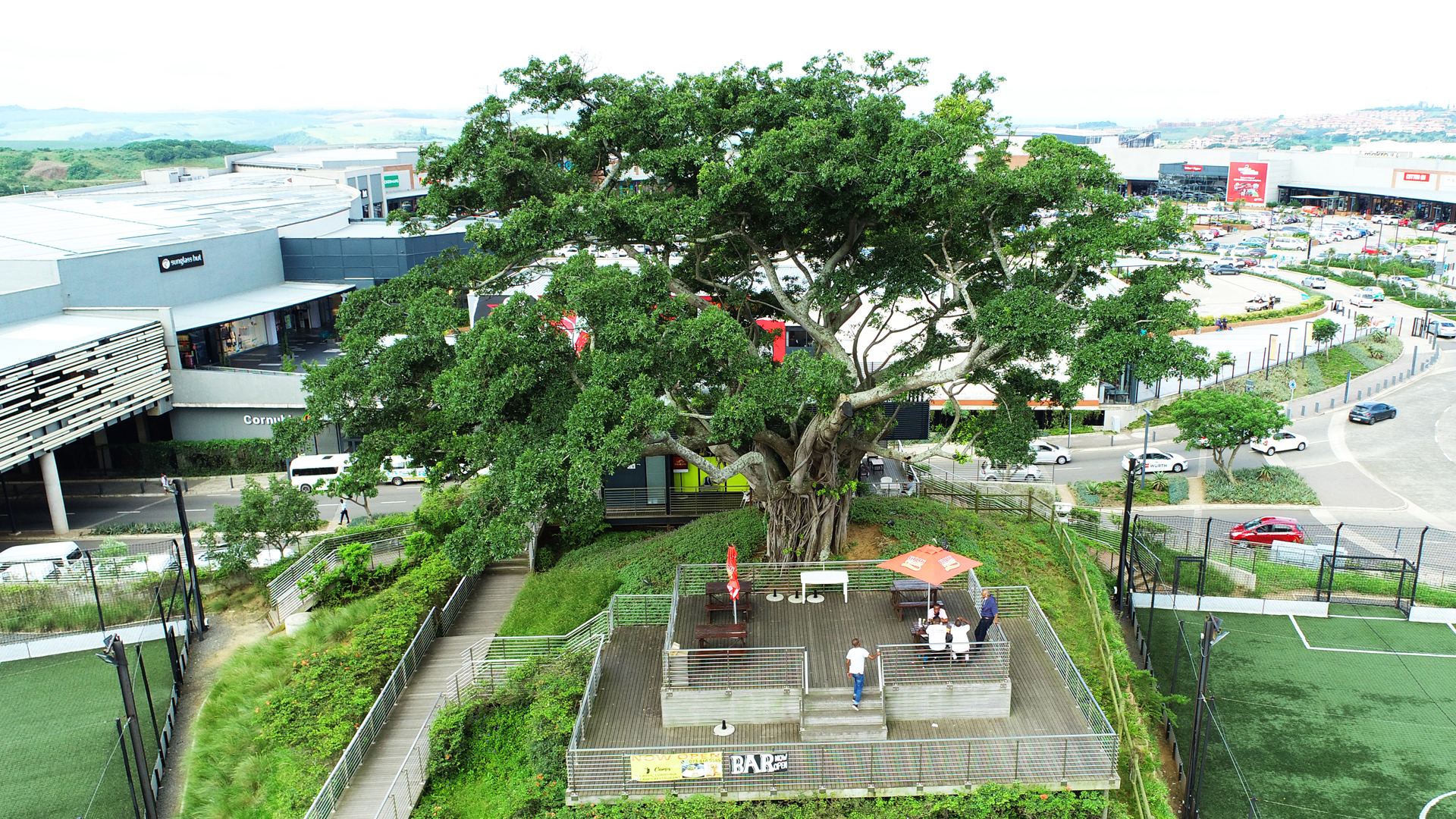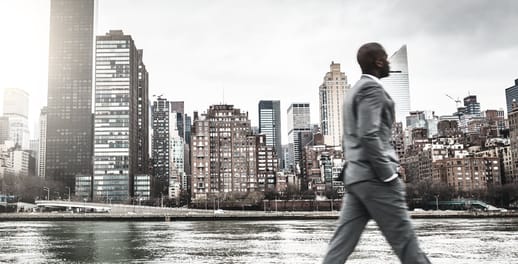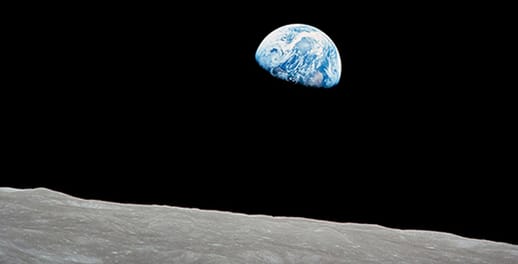Net zero: Renewables can't go it alone
Listen now
Shopping mall parking lots are unexceptional things, pragmatic to the last centimetre. Unless your retail cornucopia is Cornubia Mall in KZN, where a 117-year-old fig tree colours the grey with its natural prestige.
Its gnarled trunk stands juxtaposed against the new technology on the mall’s roof, a bone fide solar power spectacle.
“The plant is just over 20,000 square metres which equates to almost three rugby fields. It’s comprised of 9,505 separate solar panels and it caters for 40% of the mall’s total electricity demand,” said Iain Burns from Investec Property during a Future Impact podcast episode exploring the current dynamics in renewable energy.
He is realistic about the plant’s impact: it reduces demand pressure on the grid which indirectly benefits the local community. His is a more measured enthusiasm for renewables, increasingly common among industry insiders.
Cornubia’s 20th century tree, surrounded by 21st century infrastructure, is a metaphor for the renewables versus fossil fuel debate – the old and new can and must coexist.

No copper bullet
“If you add up the green spending requirements to retrofit the world's economy, its buildings, its vehicles, its roads and manufacturing assets, we believe there just aren't enough metals around to handle it.”
That was Campbell Parry, Global Resources Analyst at Investec Wealth & Investment. He’s referring to the restricted supply of ‘green’ commodities like copper, lithium, cobalt and the aptly coined ‘rare earth’ metals. Supply is not the only thorn waylaying renewables.
Population growth
While the birth rates in many first-world western societies have dipped below what’s needed to sustain population growth, other territories remain fecund.
“By 2050, there are going to be approximately 11 billion people on Earth. It's almost impossible to think of renewables alone being able to support that growth, especially as much of it will come from Africa and emerging Asia,” explained Parry.
Political willpower
If Africa and Asia are the loci of population growth, then it makes sense to push hardest for the development of renewable energies in those territories. Several factors stand in the way of that outcome.
First, African countries cannot afford to pay for large-scale overhauls of their energy infrastructure and so rely on reticent developed-world funding. Second, everything happens slowly in Africa. And third, Asia (read China) largely does what it wants.
Doldrums & storage
When the wind hushed itself in the North Sea last year, the countries relying on the towering turbines sunk in its shallow waters were left scrambling for natural gas, an expensive replacement thanks to Vladmir Putin.
“I'm a big fan of renewable technologies as a solution for climate change. But they can only fulfill that role when battery storage technology is able to convert those electrons to something that can be stored reliably,” said Parry.
Renewable emissions
Then there’s the inconvenient truth about what it costs to build renewable energy capacity, not in rands and cents, but in CO2.
According to Parry, it takes about 140 tonnes of coking coal to build a 3-megawatt wind turbine, which would emit about 250,000 kilograms of CO2, approximately equivalent to a year’s worth of exhaust fumes from 53 petrol cars.
In summary, we need to accept that fossil fuels will be part of the global energy mix for decades to come, if we want to keep the lights on.
Refocus our energy
The discourse needs to shift from bashing fossil fuels to a more productive plane, a sentiment shared by the third panellist on the podcast, Jasandra Nyker, CEO of Nala Renewables, a joint venture between Trafigura and IFM Investors.
“I don't believe there is one energy solution out there. An energy mix is required. And no matter what you mine, whether it’s coal or minerals for batteries, it needs to be done sustainably.”
In other words, focus less on what is coming out of the ground, and more on how it’s being extracted. If it is coal, maintain your power station infrastructure and store the feedstock properly. Give the controversial combustible a green tint. Investors can pull ESG levers to make that happen.
Another nugget from Nyker: “Renewables are self-sustaining assets, whereas a coal-fired power plant needs 200 odd people to operate and maintain it. The expectation that renewables will solve the job creation problem is unrealistic.”
Instead of relying on renewables to replace the jobs shed by decommissioned coal stations, she recommends reflection on how we spend our substantial education budget:
“My parents were teachers in South Africa. And I would say we need to rethink the whole academic programme. Our youth leave the education system unfit for the needs of the country and the global economy.”
If the CEO of a company called Nala Renewables, who has been immersed in the sector since its birth in the early 2000s, can acknowledge both sides of the renewables coin, then so should we.
Transitionary energies
Okay, so we need more than renewables and soon. Who do we bring off the bench?
Natural gas is by no means environmentally-friendly. While drilling for it is largely benign, the more lucrative fracking method creates toxic wastewater that can permeate natural habitats. And its pipelines clear trees and other flora.
But it does emit roughly half the CO2 released by burning coal. What’s more, South Africa needn’t look far to find it. Parry jumps back in:
“Total Energies and Shell have discovered significant reserves of natural gas off our coastline, as well as in Southern Namibia. We can monetise that gas in a sustainable way if we get the regulations right. It can become a just transition fuel for SA.”
Nuclear is another viable option with a bad rap. For South Africans, the word is basically a synonym for corruption; globally it conjures haunting images of Chernobyl and Fukushima. But its benefits are undeniable:
“It's a reliable, carbon-free and efficient form of base load energy generation that lasts for 40 years plus, 24 hours a day, seven days a week. It's fantastic,” said Parry.
Renewables are still a great story, right?
Imagine a future where South Africa’s world-beating sun and wind is efficiently transformed into storable green hydrogen using platinum and palladium, mined sustainably in our backyard, as the catalysts. Imagine we produced enough of the gas to not only banish loadshedding from our lexicon, but to supply a global export market. We’re not there yet, but it’s coming. And you should be excited about it.
What’s next for Cornubia Mall? There is no roof space for more solar panels. Batteries? No need: all the power the system produces is used. Acknowledging those limitations, they are pivoting to other sustainability initiatives:
“We are currently looking at doubling or tripling the capacity of our rainwater capture system, aiming to harvest enough grey water to run the entire mall,” said Burns.
And, of course, to keep an old fig tree alive.
Receive Focus insights straight to your inbox






